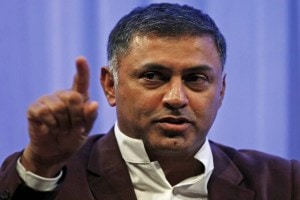As artificial intelligence reshapes industries rapidly, two senior leaders engaged in the new age technology say that despite the speed of progress, it is still difficult to predict the economic and societal impact of the technology. Srinivas Narayanan, vice president of engineering at OpenAI, and Aparna Chennapragada, chief product officer – AI at Microsoft, spoke to Anees Hussain about AI’s development, India’s role in shaping the field and the limits of current systems. Excertps:
How would you characterise this moment in AI development?
Narayanan: This is a major technological shift. Many of us in tech haven’t seen a tool this broad in scope. People are applying it in education, healthcare, finance, and across many other fields.
Chennapragada: The pace of progress is very fast. Things that seemed impossible just two years ago are now part of daily use. For example, generating images from text used to feel like magic. Now, it’s common. This creates both opportunity and pressure, novelty alone isn’t enough anymore.
What are the biggest risks and challenges you are grappling with?
Narayanan: There are short- and long-term concerns. Right now, people can misuse AI to spread disinformation or develop unbalanced relationships with the technology. In the long term, it will affect jobs and economic systems. We are still in early days, so the full impact is unclear. But it’s important to start preparing society for what’s coming.
Chennapragada: In the past, knowledge was naturally limited by access. Now, AI gives people expertise in areas like health and finance instantly. That’s positive, but it raises hard questions about how economic systems shift and which skills remain valuable.
There’s debate in India about building indigenous LLMs versus using existing ones. What’s your perspective?
Narayanan: There’s room for both large and small models, depending on the task. For straightforward applications, smaller models can work. But for situations that require reasoning in new contexts, larger models are more effective. Each country has its own needs and building for those alongside general-purpose tools is useful.
Chennapragada: It’s not just about the model. A bigger question is whether the data used to train models represents all viewpoints, languages and cultures.
More countries are now creating their own training data. This helps ensure the systems reflect local realities. In the future, people won’t just write for other people, they will write for machines too.
Where do you see the next breakthrough coming from? Architecture or human-led training?
Narayanan: Recent progress came from training models that reason more effectively by thinking in context, not just predicting the next word. There’s still room to grow using current techniques. A key challenge now is designing more complex problems that the models can learn from. For that, high-quality expert data is essential.
Chennapragada: There’s already a lot we can do with current systems. Many tasks that professionals handle today are repetitive and simple. AI can take over those, allowing people to focus on more skilled work. That doesn’t require new breakthroughs in model design, it just needs thoughtful product development.
Given that LLMs are trained on next-token prediction, they rarely say “I don’t know”. Is this a limitation you are addressing?
Narayanan: Yes, it’s something we are working on. Current models are designed to give answers, not ask questions or express doubt. But future systems need to feel more conversational. Recognising what they don’t know is a necessary improvement.
What excites you most about AI applications going forward?
Chennapragada: I am interested in user interfaces that adapt to each person, not just generic tools. I also think video-based AI will grow fast as humans are visual thinkers. Lastly, physical AI, where machines interact with the real world, is an area to watch.
Narayanan: I am focused on uses that help people do more, think bigger, and become more productive. If we can manage the risks, AI has potential to support meaningful progress across many areas.








